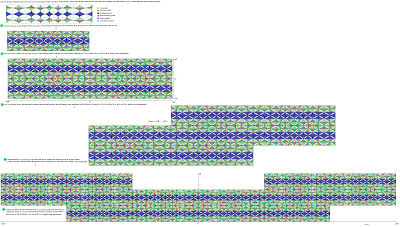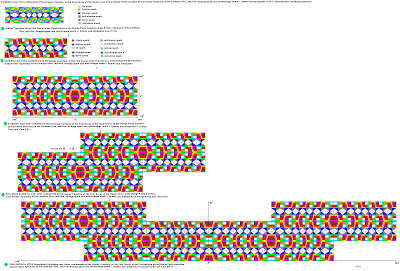I- Introduction
I would like to bring a new idea of how is it possible to produce Soft Diamond by using Rugosa corals as living organisms and doing Higgs boson work.
This experiment is an explanation to Bose Einstein Condensate system (BECs) theory. Ink and chenille are within the subject as they share the same qualities as Diamond. For the latter by the structural color, and by the interaction of electrons with the molecule with Dyes based ink system. All definitions are from Wikipedia; and their presence within this subject is to clarify the phenomena of this experiment. I also included graphs for physics explanation purpose.
II- Definitions
1- Dyes
The advantage of dye-based ink systems is that the dye molecules interact chemically with other ink ingredients. This means that they can benefit more than pigmented ink from optical brighteners and color-enhancing agents designed to increase the intensity and appearance of dyes. Because dyes get their color from the interaction of electrons in their molecules, the way the electrons can move is determined by the charge and extent of electron delocalization in other ink ingredients. The color emerges as a function of the light energy that falls on the dye. Thus, if an optical brightener or color enhancer absorbs light energy and emits it through or with the dye, the appearance changes, as the spectrum of light re-emitted to the observer changes.
Chenille typically contain structural color.
2- In chemistry, delocalized electrons are electrons in a moleculee, ion or solid metal that are not associated with a single atom or one covalent bondd. Delocalized electrons are contained within an orbital that extends over several adjacent atoms. Classically, delocalized electrons can be found in conjugated systems and mesoionic compounds. It is increasingly appreciated that electrons in sigma bonding levels are also delocalized. For example, in methane, the bonding electrons are shared by all five atoms equally. Pervasive existence of delocalization is implicit in molecular orbital theory.
3- In chemistry, a conjugated system is a system of connected p-orbitals with delocalized electrons in compounds with alternating single and multiple bonds, which in general may lower the overall energy of the molecule and increase stability. Lone pairs, radicals or carbenium ions may be part of the system. The compound may be cyclic, acyclic, linear or mixed.
4- Conjugation is the overlap of one p-orbital with another across an intervening sigma bond (in larger atoms d-orbitals can be involved).
A conjugated system has a region of overlapping p-orbitals, bridging the interjacent single bonds. They allow a delocalization of pi electrons across all the adjacent aligned p-orbitals.The pi electrons do not belong to a single bond or atom, but rather to a group of atoms. The largest conjugated systems are found in graphite, conductive polymers, and carbon nanotubes.
5- Conductive polymers or, more precisely, intrinsically conducting polymers (ICPs) are organic polymers that conduct electricity. Such compounds may have metallic conductivity or can be semiconductors. The biggest advantage of conductive polymers is their processability, mainly by dispersionn. Conductive polymers are generally not thermoplastics, i.e., they are not thermoformable. But, like insulating polymers, they are organic materials. They can offer high electrical conductivity but do not show similar mechanical properties to other commercially available polymers. The electrical properties can be fine-tuned using the methods of organic synthesis and by advanced dispersion techniques.
6- The linear-backbone "polymer blacks" (polyacetylenee, polypyrrolee, and polyanilinee) and their copolymers are the main class of conductive polymers. Historically, these are known as melaninss. Poly(p-phenylene vinylene) (PPV) and its soluble derivatives have emerged as the prototypical electroluminescent semiconducting polymers. Today, poly(3-alkylthiophenes) are the archetypical materials for solar cellss and transistors.
7- Electroluminescence (EL) is an optical phenomenon and electrical phenomenon in which a material emits light in response to the passage of an electric current or to a strong electric field. This is distinct from black body light emissionn resulting from heat (incandescence), from a chemical reaction (chemiluminescencee), sound (sonoluminescence), or other mechanical action (mechanoluminescence).
7-1- Mechanism
Electroluminescence is the result of radiative recombination of electrons and holes in a material, usually a semiconductor. The excited electrons release their energy as photons - light. Prior to recombination, electrons and holes may be separated either by doping the material to form a p-n junction (in semiconductor electroluminescent devices such as light-emitting diodes) or through excitation by impact of high-energy electrons accelerated by a strong electric field (as with the phosphors in electroluminescent displays).
7-2- Examples of electroluminescent materials
Electroluminescent devices are fabricated using either organic or inorganic electroluminescent materials. The active materials are generally semiconductors of wide enough bandwidth to allow exit of the light.
The most typical inorganic thin-film EL (TFEL) is ZnS:Mn with yellow-orange emission. Examples of the range of EL material include:
a- Powdered zinc sulfide doped with copper (producing greenish light) or silver (producingbright blue light)
b- Thin-film zinc sulfide doped with manganese (producing orange-red color)
c- Naturally blue diamond, which includes a trace of boron that acts as a dopant.d- Semiconductors containing Group III and Group V elements, such as indium phosphide (InP), gallium arsenide (GaAs), and gallium nitride (GaN).
8- In mineralogy, diamond is an allotrope of carbon, where the carbon atoms are arranged in a variation of the face-centered cubic crystal structure called a diamond lattice. Diamond is less stable than graphite, but the conversion rate from diamond to graphite is negligible at ambient conditions. Diamond is renowned as a material with superlative physical qualities, most of which originate from the strong covalent bonding between its atoms. In particular, diamond has the highest hardness and thermal conductivity of any bulk material. Those properties determine the major industrial application of diamond in cutting and polishing tools and the scientific applications in diamond knives and diamond anvil cells.
Diamond produced by Rugosa corals
9-Superconductivity is a phenomenon of exactly zero electrical resistance and expulsion of magnetic fields occurring in certain materials when cooled below a characteristic critical temperature. It was discovered by Heike Kamerlingh Onnes on April 8, 1911 in Leiden . Like ferromagnetism and atomic spectral lines, superconductivity is a quantum mechanical phenomenon. It is characterized by the Meissner effect, the complete ejection of magnetic field lines from the interior of the superconductor as it transitions into the superconducting state. The occurrence of the Meissner effect indicates that superconductivity cannot be understood simply as the idealization of perfect conductivity in classical physics.
10- An insulator is a material that does not respond to an electric field and completely resists the flow of electric charge. In practice, however, perfect insulators do not exist. Therefore, dielectric materials with high dielectric constants are considered insulators. In insulating materials valence electrons are tightly bonded to their atoms. These materials are used in electrical equipment as insulators or insulation. Their function is to support or separate electrical conductorss without allowing current through themselves. The term also refers to insulating supports that attach electric power distributionn or transmission conductors to utility poles or transmission towers.
III-Conclusion
By comparing the result of the experiment and the definitions cited above, Rugosa corals have the ability of creating subatomic particles, means they have the same ability of Higgs boson. In this experiment the production of Diamond is possible. Finally a decision to fund this idea of producing Diamond is imminent. Rugosa corals are ready to introduce to the world renewable energies and innovative technologies as explained in earlier posts. The list of sustainable elements to be produced is long and hope in the future I will have the chance to make more experiments which I will share with you.









No comments:
Post a Comment